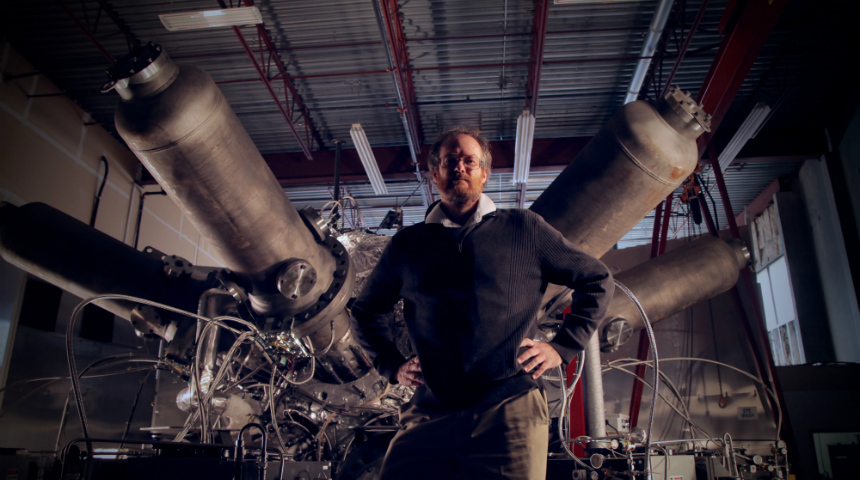There is something magnificent about human endeavours that require several lifetimes to achieve.
The Basílica i Temple Expiatori de la Sagrada Família in Barcelona was started in 1888 by architect Antoni Gaudí, but he will have been dead for 100 years before this Catholic church, the crowning achievement of his career, is completed. How does an idea hang on for so long, and more importantly, who and how does the physical realization of that idea happen?
When society talks about clean energy, images of wind turbines and solar panels immediately spring to mind. Private billionaires like Elon Musk are seen as the public face of 'a better future.' And yet one of the earliest scientific ideas for green power is actually nuclear fusion, and for the past five years, a large scale prototype has been quietly being constructed in southern France.
Since Ronald Reagan and Mikhail Gorbachev shook hands in 1985, there has been a $14 Billion (and counting) engineering mega-project involving seven of the world's most powerful nations, something analogous to the early stages of the International Space Station, inching towards fruition. It is called, ITER, or the International Thermonuclear Experimental Reactor; but in Latin, iter also means 'the way.'
Since the turn of the century, people have dreamed to not just harness the power of our sun, but to create and manage our own tiny version for all our energy needs. Fusion is a beautifully simple idea generating vast sums of nuclear energy by combining small molecules elements like our sun, instead of blowing molecules apart like our bombs.
Hence the cheeky title of Mila Aung-Thwin and Van Royko's primer on nuclear fusion, one of modern science and engineering's greatest spiritual quests. It's a journey that has proven to be fraught with peril, and has seen its share of prophets, con-men, and project managers.
From a self-educated Russian soldier who had a vision of a magnetic containment system, the Tokamak, come to him dream while on duty on a remote Soviet island 1949, to a German-Austrian expatriate in Argentina, at about the same time, that fooled the world, and his local government, that his Thermotron was on the verge of reality that he scored his own private island. The film effectively dramatizes these with beautiful little animated vignettes in between scientists wringing their hands at the politics and the possibility of their careers leading to the largest single failed experiment in the history of mankind.
There are also some modern, 21st century pioneers, that have been bitten by the fusion bug, duct tape physicists on a (relative) Home Depot budget that are looking into their own reactor designs. Companies like General Fusion and Focus Fusion that are not constrained by big government and big funding, but the private sector is equally constrained in terms of resources. The Germans are also working on thier own design in tandum with ITER, cryptically called the Wendelstein 7x Stellerator, that has lit a plasma only for a fraction of a second, last year.
The US Congress has placard on the wall of one if its hearing rooms that reads, "Where there is no vision, the people will perish." This underscores the challenges we collectively, as a species, face to power future generations on our planet without wrecking the place, and, perhaps more optimistically, open up the opportunity of spreading out into the solar system. Belief is easy, Science is hard. The big scientific dreams require not just collaboration across people and conflicting nations and cultures, but across large spans of time.
And the bringing the Tokamak design to scale at ITER has proven a laundry list of complex technical, funding, and political setbacks that have shaken (and diminished) populist credibility and interest. The American Congress threatens to pull funding, the South Koreans believe ITERs project management and communication is a disaster, and Russia has gone far afield from the Perestroika era. At one point, late in the film, you see a senior physicist, 35 years into his career, and an even older, long retired physicist shake hands and smile while lamenting the fact they will probably never bear witness to their life goals, seeing the clean nuclear energy of ITER type designs become the primary source of all the world's energy.
Let There Be Light is an snappy bird's-eye view, a state of the nation(s) glimpse, of ITERs scientists, politicos and construction workers as they push towards 'first plasma' in 2025, co-incidentally the same year that Sagrada Família should be complete. Praise be to science and forward thinking government.
Review originally published during Hot Docs in April 2017. The film opens in Toronto on Friday, September 22 at Hot Docs Ted Rogers Cinema. Co-director Mila Aung-Thwin will be in Toronto for the opening weekend for Q+As post screening.







